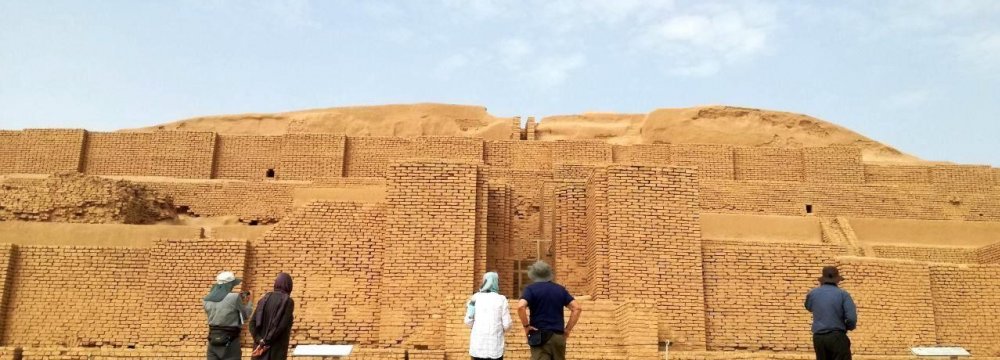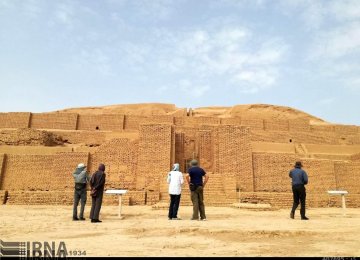Chogha Zanbil ‘basket mound’ is the world’s oldest, best preserved, and architecturally unique ziggurat. It is an ancient Elamite complex located 40 Km southeast of Susa, Khuzestan Province.
In 1979, Chogha Zanbil became the first Iranian site to be inscribed on the UNESCO World Heritage List.
Together with the city of Dur Untashi, it was constructed in 1250 BC by Untash Napirisha as a religious complex dedicated to Inshushinak, bull-god of Susa, and other deities of Elamite pantheon such as Napirisha, Ishme-Karab, and Kiririsha. The most important cultic rituals were performed in the topmost temple.
Specifications
With 3 brick walls and 7 gates, Chogha Zanbil survived erosion and earthquakes. King’s palace, royal tombs, temples, stables, food storages and various tools were found within the 3 walls, CHN reported.
The ziggurat served as both temple and tomb. Measuring 100×100 m at the base, it has 5 separately built concentric levels of varying elevations, each with an independent construction directly linked to the ground.
The structure of Chogha Zanbil is cased with fired bricks. Sun-dried bricks are used as filler. The exterior of the monument was decorated with glittering blue and green glazed fire bricks, inlaid ivory mosaics, and opaque glass mosaics depicting prancing creatures.
On both sides of the entrance gate to the enclosure were placed guardian bulls probably personification of Inshushinak and winged griffins in glazed terracotta.
Around the main ziggurat were other cultic shrines of which the T-shaped temple of wisdom-god Nabu is architecturally dissimilar.
Burial Tradition
Remnants of royal tombs, of a city, circular walls, and even a stunning water purification system can be seen around.
The close by subterranean tomb chambers bear resemblance to the royal funerary complex beneath Haft Tepe Temple at ancient Elamite city of Kabnak, 10 km southeast of Susa and 60 km south of Andimeshk, Khuzestan.
Brick Inscriptions
The ziggurat, aligned with cardinal directions, indicates Elamite science. Bricks, inscribed in Elamite and Akkadian cuneiform, and placed at regular intervals, recount the construction of the city and its dedication to Inshushinak.
More than 5,000 brick inscriptions have been excavated. These inscriptions bear the name of King Untash Naprisha, son of Humban Numena, king of Anshan and Susa.
According to the inscriptions, Untash Naprisha founded the city of Dur Untash and built a multileveled temple for the gods Inshushinsk and Napirisha, as well as various other deities.
It can be seen on the outer layer of the ziqqurrat, that the builders used one row of these inscribed bricks for every ten rows of normal brick.
One of the Elamite texts of Chogha Zanbil reads accordingly:
“I, Untash Napirisha, have built a multileveled temple of golden brick, silver brick, black opal stone, and white stone of the land, and have dedicated this holy place to the gods Inshushinak and Napirisha.
May the curse of the holy area of Inshushinak, Napirisha and Kiririsha befall on the person who destroys, harms or relocates its golden brick, silver brick, black opal, white stone or bricks, and may his decedents be removed underneath the sun.”
The ziggurat temple was in use until Assyrian king Ashurbanipal destroyed Chogha Zanbil in 640 BC.





